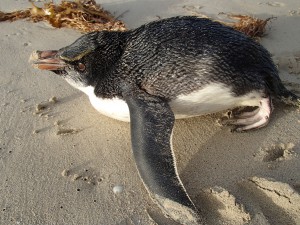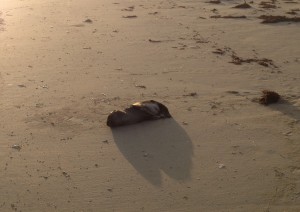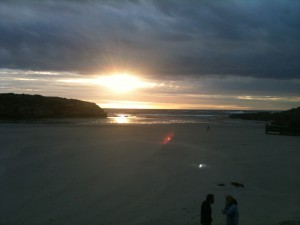Sharing our summer shores with marine wildlife
The mini-heatwave that has hit south-eastern Australia this week is a fitting welcome to the summer festive season. With many of us flocking to the coast for relief on a hot day, or for a well-earned holiday, it is timely to share some advice about how best to respond to any interactions we may face with the marine and shore dwellers of the mammalian and avian kind.
As highlighted by the previous blog, this winter and spring in particular has lead to some significant events, with unusually high accounts of seabirds and sea mammals, whether fatigued, sick, or deceased, appearing on beaches along the south-eastern coast.
One peculiar visitor that I encountered in August was a Fiordland Penguin Eudyptes pachyrhynchus. The stronghold breeding colony for this species is situated on the southern island of New Zealand. While there are a handful of records of Fiordland Penguins arriving on our mainland shores, having at least four individuals observed along the southwest Victorian coast within a month was unusual.
It is most likely that sub adult or juvenile birds have encountered poor weather or food availability in their oceanic feeding grounds and migrated off their regular course. Experienced local wildlife carer Tracey Wilson took on the care of three of these exhausted birds, doing a fantastic job successfully rehabilitating two.
In the case of injury or extreme fatigue, sea and shorebird species should not be retrieved, or fed unless assessed by a trained carer or veterinarian. Providing food or causing undue stress to the bird will likely worsen the situation. Getting advice before acting is the best thing to do.
In the past few months there has also been a large number of fur seals resting on the mainland coast. It is thought that the colony of Australian Fur Seals at Lady Julia Percy Island has reached near carrying capacity, meaning more seals looking for land territories and breeding space along the mainland. Rough south-easterly weather patterns also make coastal areas such as Narrawong, Portland and Bridgewater likely landing points for fatigued individuals.
The majority of these seals are yearlings that have recently weaned from their mothers and have started fending for themselves. Adults also infrequently come ashore, and this spring there has also been the birth of pups recorded on highly visited mainland beaches.
In one instance, people passing by removed one of these pups from the beach and took it to the local veterinary clinic without seeking appropriate advice. There are a number of reasons why this type of intervention is not recommended. Firstly, seals generally have very poor rehabilitation potential. Usually the only option for an exhausted, abandoned or injured seal is euthanasia in consideration of the animal’s welfare. Secondly, mothers will often leave their young seal pups at their birth place, and head to sea to feed for up to 48 hours. If these pups are removed, even if they are then put back in a relatively close area, it significantly lowers the probability that their mothers will be able to relocate them.
There are a number of state regulations relating to approaching and touching marine mammals that are in place within Victoria, including not approaching a seal within 30 metres on land, and not allowing domestic dogs to approach a seal within 50 metres on land.
The Department of Environment and Primary Industries (DEPI) website has indexed information outlining these regulations and what to do in situations of encountering marine wildlife, and can be accessed by following this link: http://www.depi.vic.gov.au/environment-and-wildlife/wildlife/whales-dolphins-and-seals
Any wildlife, whether a bird or mammal species, should not be removed or attempted to be rehabilitated unless done by a registered wildlife carer under permit that has verbal consent from a DEPI Wildlife Officer.
In a lot of cases, the best thing we can do for wildlife on our shores is to leave them alone. If you come across an animal that you suspect is injured, sick, dying or is at a frequently visited site by people and dogs, it is always a good thing to let the relevant local contacts know. Below is a list of relevant organisations that maybe able to assist.
Victoria
- DEPI Customer Service Centre, ph: 136 186 and ask to speak to your regional wildlife officer
- Wildlife Victoria, ph: 13000 WILDLIFE / 1300 094 535, who will forward you details to a registered carer
- Australian Wildlife Research and Rescue Organisation (AWRRO), ph: (08) 8262 5452
- Local veterinary centre
South Australia
- Natural Resources South East (DEWNR), ph (08) 8735 1177
- Australian Wildlife Research and Rescue Organisation (AWRRO), ph: (08) 8262 5452
- Local veterinary centre
Having general information to pass on such as a location, activity of animal, what species or general group it is, and even a medium range photo to pass on is very helpful.
Merry Christmas to you all, thanks for your ongoing support of the Little Penguin Monitoring Program. We will kick off in the new year with the next scheduled count on Friday 3rd January, at 8.40pm. Please email me at if you are interested in coming along.




